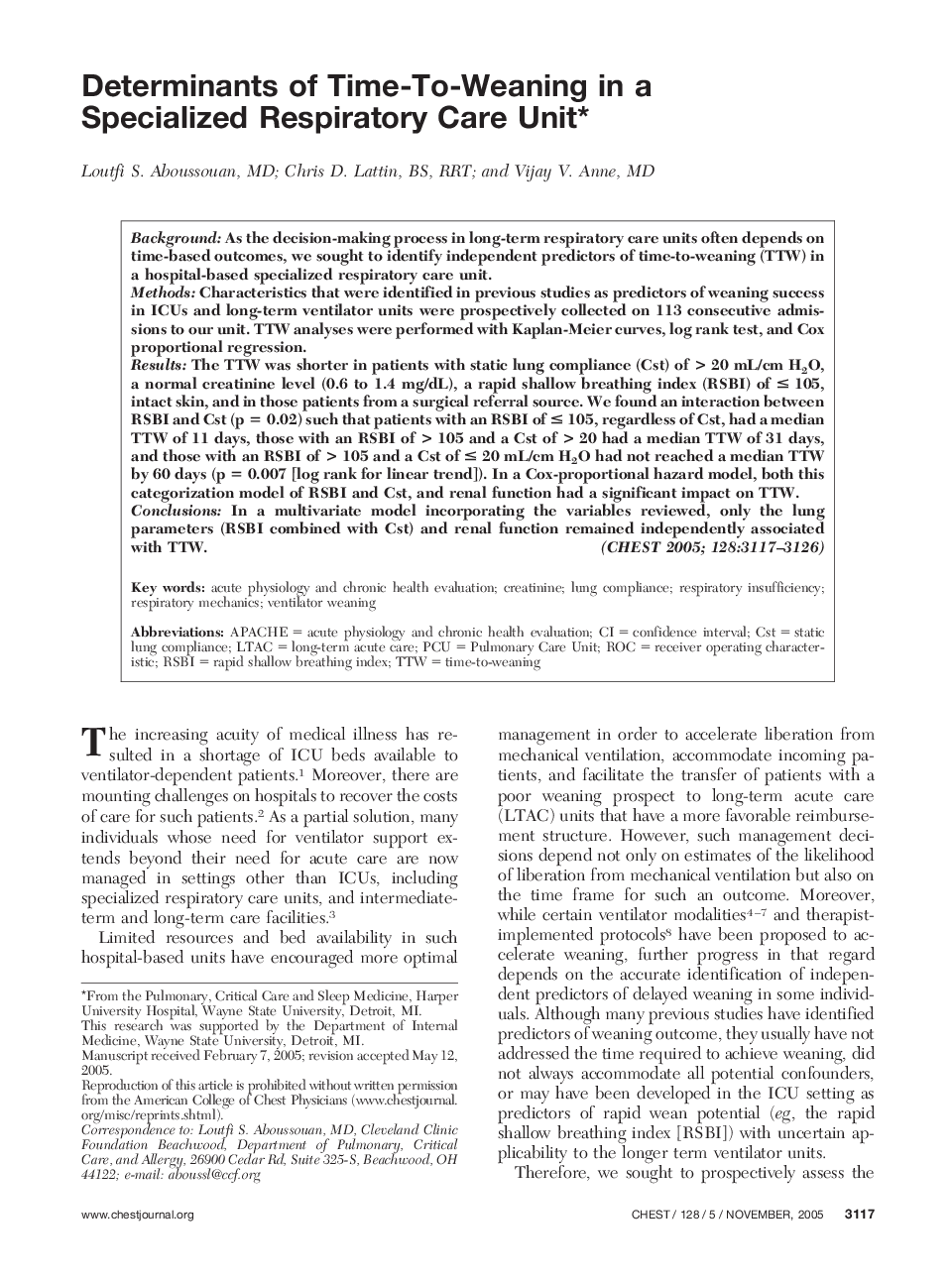| Article ID | Journal | Published Year | Pages | File Type |
|---|---|---|---|---|
| 2906037 | Chest | 2005 | 10 Pages |
Background: As the decision-making process in long-term respiratory care units often depends on time-based outcomes, we sought to identify independent predictors of time-to-weaning (TTW) in a hospital-based specialized respiratory care unit.Methods: Characteristics that were identified in previous studies as predictors of weaning success in ICUs and long-term ventilator units were prospectively collected on 113 consecutive admissions to our unit. TTW analyses were performed with Kaplan-Meier curves, log rank test, and Cox proportional regression.Results: The TTW was shorter in patients with static lung compliance (Cst) of > 20 mL/cm H2O, a normal creatinine level (0.6 to 1.4 mg/dL), a rapid shallow breathing index (RSBI) of ≤ 105, intact skin, and in those patients from a surgical referral source. We found an interaction between RSBI and Cst (p = 0.02) such that patients with an RSBI of ≤ 105, regardless of Cst, had a median TTW of 11 days, those with an RSBI of > 105 and a Cst of > 20 had a median TTW of 31 days, and those with an RSBI of > 105 and a Cst of ≤ 20 mL/cm H2O had not reached a median TTW by 60 days (p = 0.007 [log rank for linear trend]). In a Cox-proportional hazard model, both this categorization model of RSBI and Cst, and renal function had a significant impact on TTW.Conclusions: In a multivariate model incorporating the variables reviewed, only the lung parameters (RSBI combined with Cst) and renal function remained independently associated with TTW.
